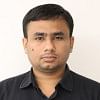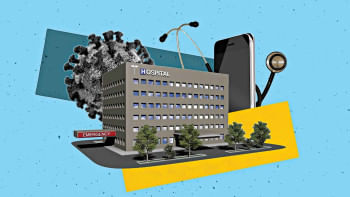Let's fix primary healthcare first

This year's theme for World Health Day, "Health for All," aligns with the World Health Organization's (WHO) overarching mission and holds particular significance for countries like Bangladesh which are striving towards achieving the Sustainable Development Goals (SDGs), including the crucial goal of ensuring health and well-being for all by 2030.
Bangladesh has made remarkable strides in improving the health and well-being of its citizens, with life expectancy increasing from 52 years in 1971 to 72 years at present. One key contributor to this achievement has been the growth of the healthcare services sector, which now operates on a three-tiered system.
At the top level of this system, specialised care is available in large urban centres. At the secondary level, district-level care is provided mainly in cities, while primary healthcare (PHC) is provided at the grassroots level, through the upazila health complex (UHC), union health and family welfare centre (UHFWC), and community clinic, located at sub-district, union, and village levels, respectively.
But when it comes to healthcare service provision, secondary- and tertiary-level facilities are major providers, despite only comprising 20 percent of the country's healthcare infrastructure. They even offer basic services that could effectively be provided at the PHC facilities. Consequently, people tend to rely on urban healthcare services, resulting in overcrowding, long wait times, and increased healthcare costs for patients.
Those living in the rural areas face even greater difficulties accessing healthcare due to transportation challenges and associated costs. Furthermore, the increased pressure on secondary- and tertiary-level facilities often hinders access to specialised care for those in need.
To address this issue, Bangladesh must prioritise the development of PHC facilities to ensure that the majority of healthcare services are available there, and people only need to move to secondary- or tertiary-level facilities, as well as the urban areas, for specialised care only. Achieving this goal will require addressing structural challenges and changing the current focus.
When it comes to healthcare service provision, secondary- and tertiary-level facilities are major providers, despite only comprising 20 percent of the country's healthcare infrastructure. They even offer basic services that could effectively be provided at the PHC facilities. Consequently, people tend to rely on urban healthcare services, resulting in overcrowding, long wait times, and increased healthcare costs for patients.
The first improvement should address the challenges in PHC facilities that hinder access to services from the UHC, UHFWC, and community clinics. Insufficient funding is a major issue leading to a shortage of essential medicines and diagnostic tools. PHC facilities also suffer from insufficient infrastructure, including a lack of reliable electricity supply and inadequate space to provide services to patients. Staff shortages are also common at these facilities, with only 43 percent having adequate staffing. These existing challenges are often accompanied by the availability of infrastructure that is not aligned with the field-level needs, or healthcare facilities are unable to use them due to a lack of other necessary infrastructure and/or skilled manpower.
These challenges faced by PHC facilities often lead to healthcare personnel opting to work in urban healthcare centres. Added to that is the lack of interest among healthcare personnel in working at these facilities, which are located in rural areas, due to the lack of basic amenities such as electricity, safe water, and accessible transportation, which can make living and working conditions challenging. Lack of career growth opportunities in upazila and rural areas, as well as concerns about personal safety and security, also contribute to the reluctance of healthcare professionals to work there. As a result, these facilities often face understaffing issues, although the government has taken strong initiatives to ensure the presence of healthcare personnel by providing permanent postings for two years to every newly recruited healthcare personnel.
Along with these structural challenges, the focus on PHC facilities is also problematic, contributing to a major population movement to urban areas to access services. The current focus of these institutions is to provide curative maternal, child, and neonatal healthcare, as it was before the 2000s. However, this focus is less relevant nowadays as Bangladesh has achieved significant progress in improving maternal and child health, particularly during the Millennium Development Goals (MDGs) period from 2000 to 2015 (although it is still important).
On the other hand, we are now facing a rapid increase in non-communicable diseases. According to the most recent estimates, around one in every 10 people in Bangladesh is diabetic, and around one in three is hypertensive. Most importantly, around half of them are undiagnosed, and they are usually diagnosed at a very later stage when healthcare professionals have limited treatment options. The prevalence of these diseases is rising rapidly in both rural and urban areas, and among people of all age groups. These non-curable conditions require long-term care, which most people do not have, making preventive care (which should be ensured through PHC facilities as they are located close to homes) crucial in addressing these challenges. But this is not evident in the services provided by primary healthcare facilities, though the country officially acknowledged its importance in the 1990s.
After 52 years of independence, the country's health profile has changed significantly. The government needs to understand this change and respond accordingly to ensure that health services are available as per citizens' current needs, rather than following a usual trend. Unfortunately, this priority is mostly absent at policy and programme levels.
Dr Md Nuruzzaman Khan is a public health expert and assistant professor of population science at Jatiya Kabi Kazi Nazrul Islam University.

 For all latest news, follow The Daily Star's Google News channel.
For all latest news, follow The Daily Star's Google News channel. 











Comments